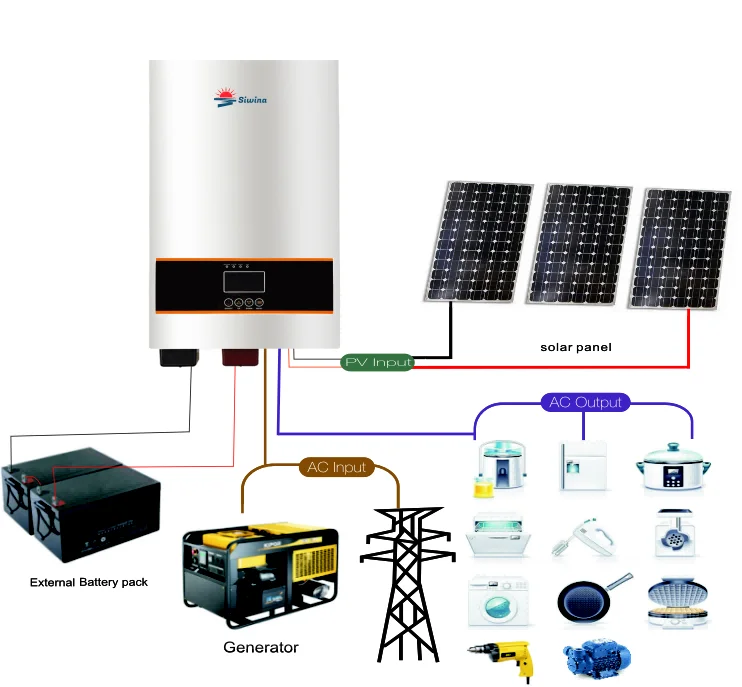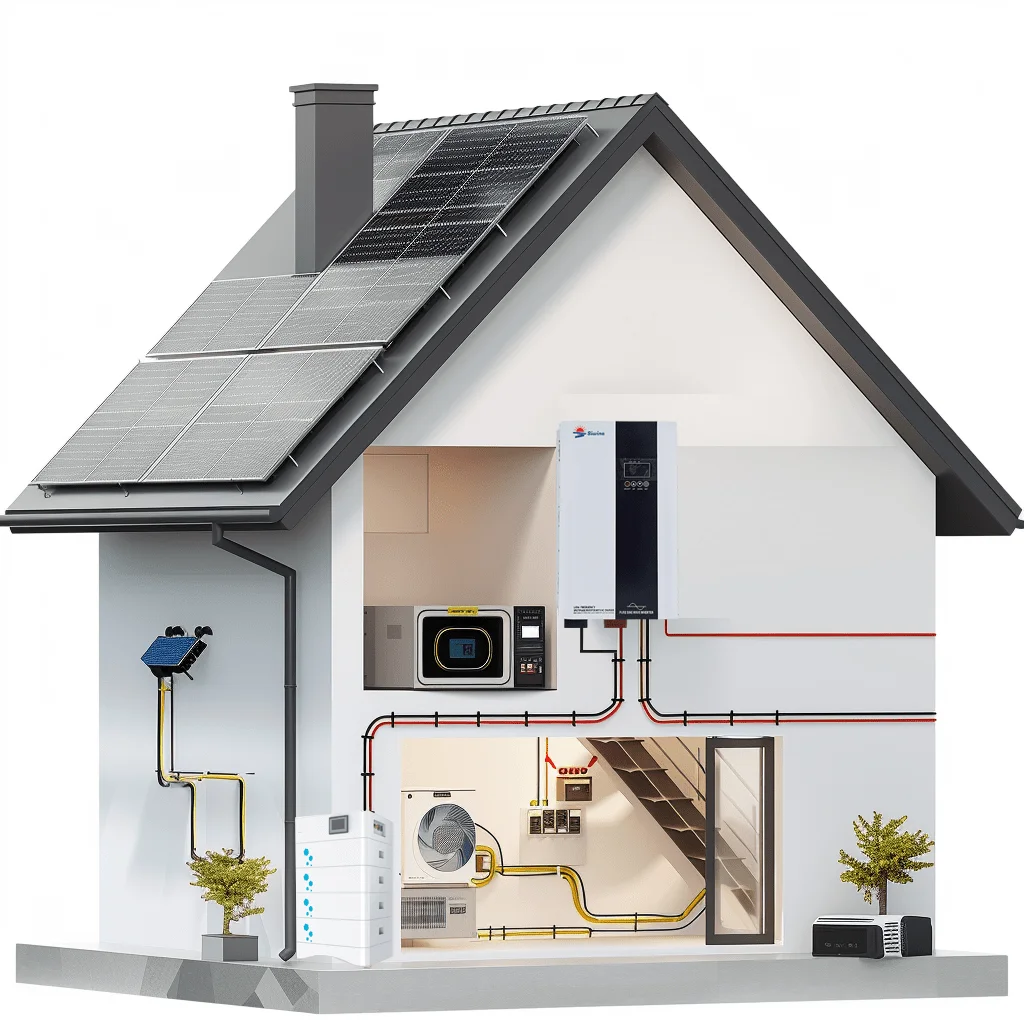What are the Low-Frequency Pure Sine Wave Off-Grid Inverters?
As solar energy technology continues to develop, more families are considering applying solar energy systems to their daily lives. One key component of these systems is the low-frequency pure sine wave off-grid inverter. It converts the DC power generated by solar panels into usable AC power for homes, serving as a reliable power solution for off-grid living.
How Does It Connect to a Solar System?
Connecting a pure sine wave off-grid inverter to a solar system involves several steps:
1. Solar Panel Connection to Inverter: Solar panels convert solar energy into DC power and connect to the inverter through a cable.
2. Inverter Connected to Battery: If you use batteries to store solar energy, the inverter can connect to the battery system to store excess power for emergencies.
3. The Inverter Connects to the Home Grid: The inverter converts DC power to AC power for household use.

4. Monitoring System Connection: Some inverters feature a monitoring system, allowing you to monitor the solar system’s status and power generation in real time through your mobile phone or computer.
What is the Benefits Use pure sine wave inverter for Homeowners?
Connecting a solar system to a low-frequency pure sine wave off-grid inverter offers numerous benefits, including:
1. Energy Conservation and Emission Reduction: Using solar power reduces reliance on traditional energy sources, lowering carbon emissions and being more eco-friendly.
2. Reduced Energy Costs: Generating electricity through solar power can cut down household energy bills, especially in sunny regions.
3. Stability and Reliability: The inverter provides stable and reliable performance, ensuring households maintain a steady power supply even without a power grid.
4. Extended Battery Life: The intelligent management of battery charging and discharging by the inverter helps extend battery life.
Problems Solved by Solar Power Systems
Power frequency off-grid inverters solve several issues in home energy use:
1. Energy Shortage: Solar systems address energy shortages in remote or unstable supply areas, providing a stable power source.
2. Environmental Pollution: Solar power generation reduces the use of fossil fuels, decreasing environmental pollution.
3. Grid Load Reduction: Solar energy systems help relieve household load on the grid, reducing pressure and improving power supply stability.
Conclusion
In summary, connecting a low-frequency pure sine wave off-grid inverter to a solar system offers a reliable energy solution for homes. It not only cuts down energy costs but also contributes to environmental protection, pointing towards a sustainable future in household energy management.

